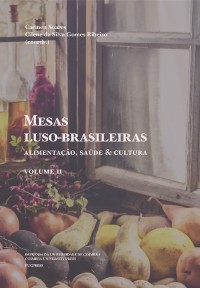Please use this identifier to cite or link to this item:
https://hdl.handle.net/10316.2/45256| Title: | O sistema alimentar da cidade do Rio de Janeiro no século XVIII: as louças destinadas ao serviço e consumo de alimentos | Other Titles: | The food system in 18th century Rio de Janeiro: pottery used to serve and consume food | Authors: | Peixoto, Sílvia Lima, Tania Andrade |
Keywords: | ceramics;portuguese tin-glazed earthenwares;oriental porcelain;food comsumption;colonial Rio de Janeiro;louças;faianças portuguesas;porcelanas orientais;alimentação;Rio de Janeiro colonial | Issue Date: | 2018 | Publisher: | Imprensa da Universidade de Coimbra | Journal: | http://hdl.handle.net/10316.2/45207 | Abstract: | In the dump area at the archaeological site located at Rua da Assembleia
was recovered, among other evidence, a great amount of tin-glazed earthenwares and
porcelain from different origins. Given that the dump area is composed of artifacts
discarded from households, commercial establishments and public institutions from
the neighborhood, these ceramic types belonged to people with different origins
and social positions who coexisted in the expanding downtown area of the city. For this reason, these artifacts are a significant sample of the daily practices of its
inhabitants. In this article, we identify the origin of the tin-glazed earthenwares
and porcelains found at the site and analyze their forms and functions, which were
closely related to the types of food consumed at that period. The analysis indicated,
given the observation of the predominance of dishes among the table service items,
an incipient process of individualization in the food consumption in the late seventeenth
and early eighteenth centuries, unexpected at that time. Na área de despejo de dejetos do sítio arqueológico situado à Rua da Assembleia foi recuperada, entre os demais vestígios, grande quantidade de louças, aí compreendidas faianças e porcelanas, de diferentes procedências. Tendo em vista que nela foram descartados materiais imprestáveis das residências, estabelecimentos comerciais e instituições existentes nas imediações do terreno, essas louças pertenceram a diferentes pessoas, de origens e estratos sociais distintos, que coexistiam então no centro da cidade em expansão, constituindo uma amostra expressiva das práticas cotidianas dos seus habitantes. Neste artigo, é identificada a procedência das faianças e porcelanas resgatadas, bem como analisadas suas formas e funções, estreitamente relacionadas com o serviço e consumo dos alimentos que compunham, à época, a dieta da população. A análise indicou, a partir da constatação da predominância de pratos dentre os itens do serviço de mesa, um incipiente processo de individualização na esfera alimentar já em fins do século XVII e início do XVIII, inesperado no universo colonial a esse tempo. |
URI: | https://hdl.handle.net/10316.2/45256 | ISBN: | 978-989-26-1719-0 978-989-26-1720-6 (PDF) |
ISSN: | 2183-6523 | DOI: | 10.14195/978-989-26-1720-6_16 | Rights: | open access |
| Appears in Collections: | Mesas luso-brasileiras: alimentação, saúde & cultura. vol. II |
Files in This Item:
| File | Description | Size | Format | |
|---|---|---|---|---|
| o_sistema_alimentar_da_cidade_do_rio_de_janeiro_no_seculo_xviii__iii_.pdf | 2.84 MB | Adobe PDF |  |
Items in DSpace are protected by copyright, with all rights reserved, unless otherwise indicated.
